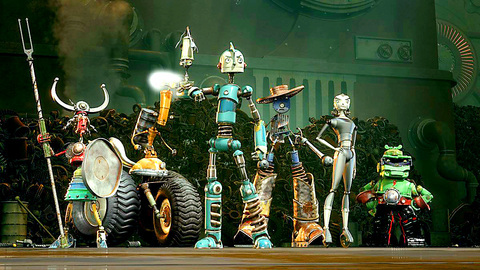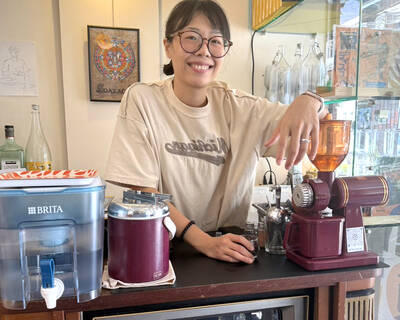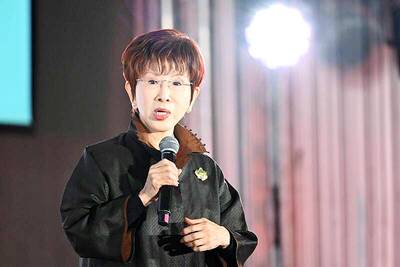Robots, directed by Chris Wedge and Carlos Saldanha, is a new 3-D computer-animated feature from 20th Century Fox's Blue Sky Studios, the outfit that brought us Ice Age, and like that movie it's a reminder that when it comes to innovative animated entertainment for all ages, there is Pixar, there is Japan and there is everybody else.
Not that Robots is bad, exactly. Visually it is fairly impressive, conjuring up a shiny, detailed world of ball bearings, gears, dents and rivets. Some of the jokes -- especially a bit at the beginning about the mysteries of robot reproduction -- are reasonably witty. The story, however, has been assembled by committee from the pop-culture junkyard: cool music on the soundtrack (including songs by Tom Waits and Fountains of Wayne); celebrity cameo voice-overs (Al Roker, to balance Katie Couric's moment in Shark Tale last fall); teary speeches about following your dreams -- and of course an annoying sidekick, voiced by Robin Williams, who played a similar role for Chris Rock at the Oscars last month.
Secondhandness is the method of Robots, and also its moral. The Bigweld company, once run by its kindly, roly-poly founder (voiced by Mel Brooks), has been taken over by Ratchet, a gleaming, soulless manager (Greg Kinnear) with a dastardly corporate mission. Encouraged by, for some reason, his clanky, fire-breathing mother, Ratchet wants to take replacement parts off the market and offer expensive "upgrades" instead. The broken-down "outmodes" who cannot afford to remake themselves will be swept off the street and sent to Ma Ratchet's underground furnace.

PHOTOS COURTESY OF FOX MOVIES
Of course, a plucky band of heroes unites to foil this plan, and the whole story can be read as an allegory of modern Hollywood, in which the imperative is apparently to overthrow the bad guys who want to make new stuff (and their mothers, too), so we can keep recycling the same old charming junk.
And to be fair, the look of Robots -- inspired by the boxy, streamlined look of mid-20th-century cars and kitchen appliances -- does have some charm. In the world of computer-generated imagery, metal has clearly replaced water as the great technical challenge. Now that Shark Tale and Finding Nemo have conquered wetness and scaliness, this movie and the forthcoming Cars from Pixar will set new standards for lifelike chrominess.
Robot City, a place inspired by Rube Goldberg, The Jetsons and Metropolis (both the Fritz Lang version and the recent Japanese anime), has impressive scale and variety, and there is a wonderful public-transportation set piece early on that thrillingly bends the laws of physics.

In the end, though, Robots is hollow and mechanical, an echo chamber of other movies and an awkward attempt to turn the intrinsically scary sensitive-robot theme into something heartwarming and cute. The hero, an aspiring inventor named Rodney Copperbottom (Ewan McGregor), is a pretty bland fellow, and for all Williams' vocal antic dialects and in-jokes, he does not breathe much new life into his stock character.
In addition to the annoying sidekick, there is a buzzing, chirping, flying coffeepot to fulfill the obligatory cute-pet role.
The film is being released both for standard movie screens and in the super-giant Imax format, and the latter version, come to think of it, was a little scary. There have been so many movies lately that warn us that machines are plotting to take over the world. Watching these clanky, smiling, big-eyed contraptions cavorting on an 80-foot screen, I could not help thinking that they had finally succeeded.


Cheng Ching-hsiang (鄭青祥) turned a small triangle of concrete jammed between two old shops into a cool little bar called 9dimension. In front of the shop, a steampunk-like structure was welded by himself to serve as a booth where he prepares cocktails. “Yancheng used to be just old people,” he says, “but now young people are coming and creating the New Yancheng.” Around the corner, Yu Hsiu-jao (饒毓琇), opened Tiny Cafe. True to its name, it is the size of a cupboard and serves cold-brewed coffee. “Small shops are so special and have personality,” she says, “people come to Yancheng to find such treasures.” She

Late last month Philippines Foreign Affairs Secretary Theresa Lazaro told the Philippine Senate that the nation has sufficient funds to evacuate the nearly 170,000 Filipino residents in Taiwan, 84 percent of whom are migrant workers, in the event of war. Agencies have been exploring evacuation scenarios since early this year, she said. She also observed that since the Philippines has only limited ships, the government is consulting security agencies for alternatives. Filipinos are a distant third in overall migrant worker population. Indonesia has over 248,000 workers, followed by roughly 240,000 Vietnamese. It should be noted that there are another 170,000

Hannah Liao (廖宸萱) recalls the harassment she experienced on dating apps, an experience that left her frightened and disgusted. “I’ve tried some voice-based dating apps,” the 30-year-old says. “Right away, some guys would say things like, ‘Wanna talk dirty?’ or ‘Wanna suck my d**k?’” she says. Liao’s story is not unique. Ministry of Health and Welfare statistics show a more than 50 percent rise in sexual assault cases related to online encounters over the past five years. In 2023 alone, women comprised 7,698 of the 9,413 reported victims. Faced with a dating landscape that can feel more predatory than promising, many in

Former Chinese Nationalist Party (KMT) chairwoman Hung Hsiu-chu’s (洪秀柱) attendance at the Chinese Communist Party’s (CPP) “Chinese People’s War of Resistance Against Japanese Aggression and the World Anti-Fascist War” parade in Beijing is infuriating, embarrassing and insulting to nearly everyone in Taiwan, and Taiwan’s friends and allies. She is also ripping off bandages and pouring salt into old wounds. In the process she managed to tie both the KMT and the Democratic Progressive Party (DPP) into uncomfortable knots. The KMT continues to honor their heroic fighters, who defended China against the invading Japanese Empire, which inflicted unimaginable horrors on the